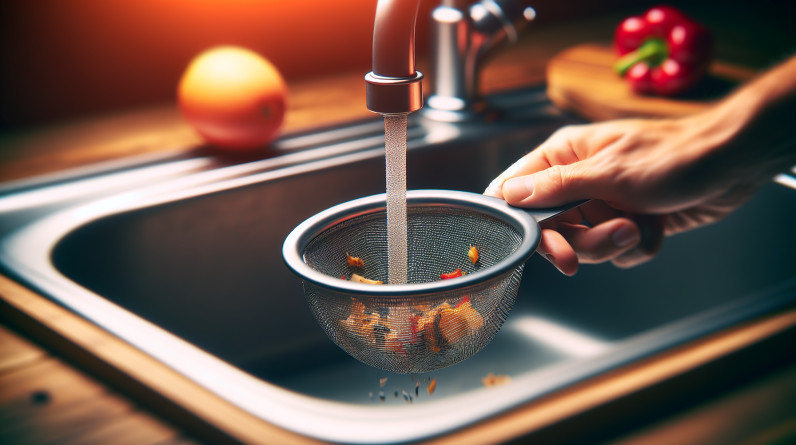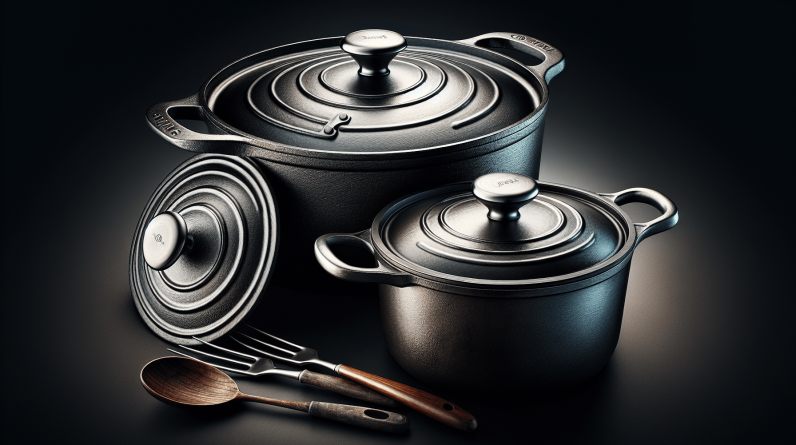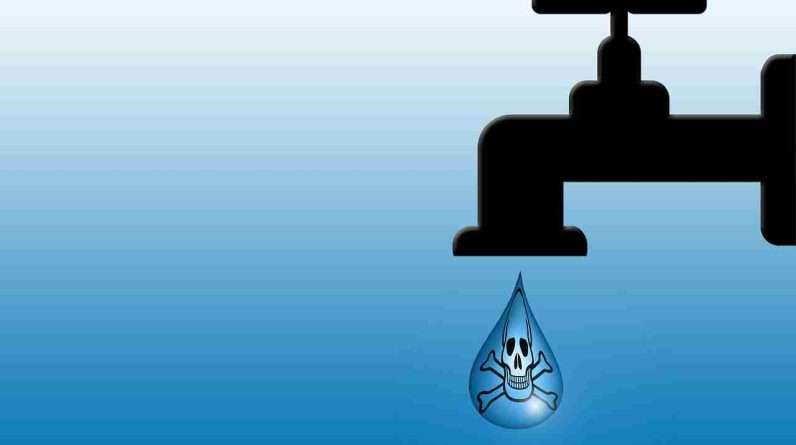In our latest article, we explore the essential first aid supplies that are a must-have in every kitchen. Accidents can happen anywhere, and the kitchen is no exception. From minor burns to cuts and scrapes, it’s important to be prepared for any mishap that may occur while whipping up your favorite dishes. Join us as we discuss the key items that should always be on hand to provide quick and effective first aid assistance in the heart of your home.

Essential First Aid Supplies
In every kitchen, it’s important to have a well-stocked first aid kit to quickly treat minor injuries and accidents that may occur. Here are some essential first aid supplies that you should have on hand:
Bandages
Bandages are a must-have in any first aid kit. They come in various sizes and types, such as adhesive bandages, sterile gauze pads, and elasticized bandages. These are used to cover and protect wounds, cuts, or abrasions, preventing infection and promoting faster healing.
Gauze
Gauze is a versatile medical supply that should be included in your kitchen first aid kit. It is used to clean wounds, apply antiseptic solutions, and absorb blood or other fluids. Sterile gauze pads can be used to cover larger wounds before applying a bandage.
Antiseptic Solution
An antiseptic solution is crucial for cleaning wounds and preventing infection. It helps kill bacteria and reduce the risk of contamination. Common antiseptic solutions include hydrogen peroxide, isopropyl alcohol, and iodine. Be sure to read and follow the instructions on the packaging for optimal use.
Adhesive Tape
Adhesive tape is essential for securing gauze pads and bandages in place. It provides support and prevents the bandages from slipping or coming loose. Look for waterproof adhesive tape, as it will hold up better in moist kitchen environments.
Scissors
Having a pair of sharp, stainless steel scissors in your first aid kit is important for cutting tape, bandages, or clothing in case of an emergency. They can also be handy for removing debris from wounds or trimming gauze to the desired size.
Tweezers
Tweezers are an invaluable tool for removing splinters, small foreign objects, or debris from a wound. Ensure that the tweezers are clean and disinfected before each use to avoid introducing bacteria into the wound.
Disposable Gloves
It is essential to protect oneself when providing first aid. Disposable gloves create a barrier between the person administering aid and the injured individual, preventing the spread of pathogens and reducing the risk of contamination.
Instant Cold Packs
Instant cold packs are a useful addition to your kitchen first aid kit. They provide immediate relief for sprains, strains, bruises, or burns. These packs can reduce swelling, ease pain, and promote faster recovery. Simply activate the pack by squeezing or shaking to activate the cooling effect.
Burn Gel
Burn gel is specifically formulated to soothe and cool minor burns. They help alleviate pain, reduce inflammation, and provide a protective barrier against bacteria. It is important to apply burn gel as soon as possible after a burn occurs for maximum effectiveness.
Antibiotic Ointment
Antibiotic ointment is a crucial component of any kitchen first aid kit. It helps prevent infection in minor cuts, scrapes, or burns. Applying antibiotic ointment can aid in faster healing and reduce the risk of scarring.

Additional Supplies for Specific Injuries
Depending on your specific needs, you may want to consider adding the following supplies to your kitchen first aid kit:
Eye Wash Solution
Accidents can happen in the kitchen, and splashes of hot liquids or chemicals can cause damage to the eyes. Having an eye wash solution readily available can help minimize potential damage and provide immediate relief. Quickly flushing the eyes with the solution can help remove foreign substances and prevent further harm.
Burn Dressings
For more serious burns, it is important to have burn dressings in your kit. These dressings are designed to protect the burn area from infection, keep it moist, and provide pain relief. Seek medical attention for severe burns, while applying burn dressings can help alleviate pain and support the healing process.
Sterile Eyepads
Sterile eyepads are designed to cover and protect an injured eye. They can be used to cushion and shield the eye from debris, reducing the risk of further damage. If someone in the kitchen sustains an eye injury, placing a sterile eyepad over the eye and seeking medical attention is crucial.
Splint
In case of a fracture or suspected fracture in the kitchen, having a splint on hand can help immobilize the affected area, providing stability and reducing further injury. A splint can be improvised with materials such as wooden sticks, rolled-up newspaper, or even a sturdy cutting board.
CPR Mask
While not common in every kitchen first aid kit, having a CPR mask can be a life-saving addition. It provides a barrier between the responder and the person who requires cardiopulmonary resuscitation (CPR), reducing the risk of infection. In emergencies where CPR is necessary, a CPR mask allows for rescue breaths to be administered safely.

Medications
In addition to first aid supplies, it can be beneficial to keep some common medications in your kitchen first aid kit. Remember to always check expiration dates and replace medications as needed. Some useful medications to include are:
Pain Relievers
Over-the-counter pain relievers like acetaminophen or ibuprofen can provide temporary relief for minor headaches, muscle aches, or pain caused by minor injuries. These medications can be especially helpful while waiting for medical assistance or for addressing minor discomforts.
Antihistamines
Allergic reactions can quickly occur, especially in the presence of food allergens or insect bites. Antihistamines can help alleviate symptoms such as itching, hives, or mild allergic reactions. However, severe allergic reactions require immediate medical attention.
Antacids
Stomach discomfort can arise while cooking or eating, and having antacids on hand can provide relief from heartburn, acid indigestion, or other mild gastrointestinal issues. Antacids work by neutralizing stomach acid, reducing discomfort and providing temporary relief.

First Aid Tools
In addition to supplies and medications, it is essential to keep some first aid tools readily available. These tools can provide guidance, assistance, and crucial information during an emergency:
First Aid Manual
A first aid manual is an important resource for identifying and treating various injuries and medical emergencies. It provides step-by-step instructions for administering first aid until professional medical help arrives. Familiarizing yourself with the manual can help you respond effectively and confidently during unexpected situations.
CPR Instructions
CPR is a vital skill that everyone should learn. Having a card or poster with clear CPR instructions in your kitchen first aid kit can serve as a visual reference in case of an emergency. These instructions demonstrate the proper techniques for chest compressions and rescue breaths, helping you provide immediate assistance when needed.
Emergency Contact List
In case of a serious emergency, having a list of emergency contact numbers readily available is crucial. Include local emergency services, poison control, and important personal contacts such as family doctors or nearby friends or relatives who can help in times of need. This list should be easily accessible in your first aid kit.

Storage and Organization
To ensure the effectiveness and accessibility of your kitchen first aid supplies, proper storage and organization are key:
First Aid Kit or Container
Choose a durable and easily identifiable first aid kit or container to store all your supplies. Choose one with compartments or dividers to keep items organized and easily accessible. Make sure it is well-sealed and keeps items protected from moisture and damage.
Labeling and Expiration Dates
Regularly check the expiration dates of all medications and supplies in your first aid kit, including bandages and ointments. Discard and replace any expired items to ensure the effectiveness and safety of your supplies. Labeling each item can also help in finding the required supplies quickly during an emergency.
Kitchen Accessibility
Ensure that your first aid kit is easily accessible in the kitchen. It should be easily identifiable, in a clearly marked location, and within reach of all individuals who may need it. Be sure to familiarize yourself with the location and contents of your first aid kit to respond swiftly during an emergency.
By maintaining a well-stocked first aid kit in your kitchen, you can confidently handle minor injuries and be prepared for unexpected emergencies. Regularly check and replenish your supplies, and stay informed about proper first aid techniques. With the right supplies, tools, and knowledge, you can promote safety and well-being in your kitchen environment.










